The contents of this article are human-created.
This post may contain affiliate links. Please see my full disclosure for details.
Learn how to make homemade beetroot powder in the oven! It's a delicious nutrient booster that can also act as a natural food colouring. Plus, it's a great way to preserve beets without a dehydrator, freeze dryer, or canning equipment.
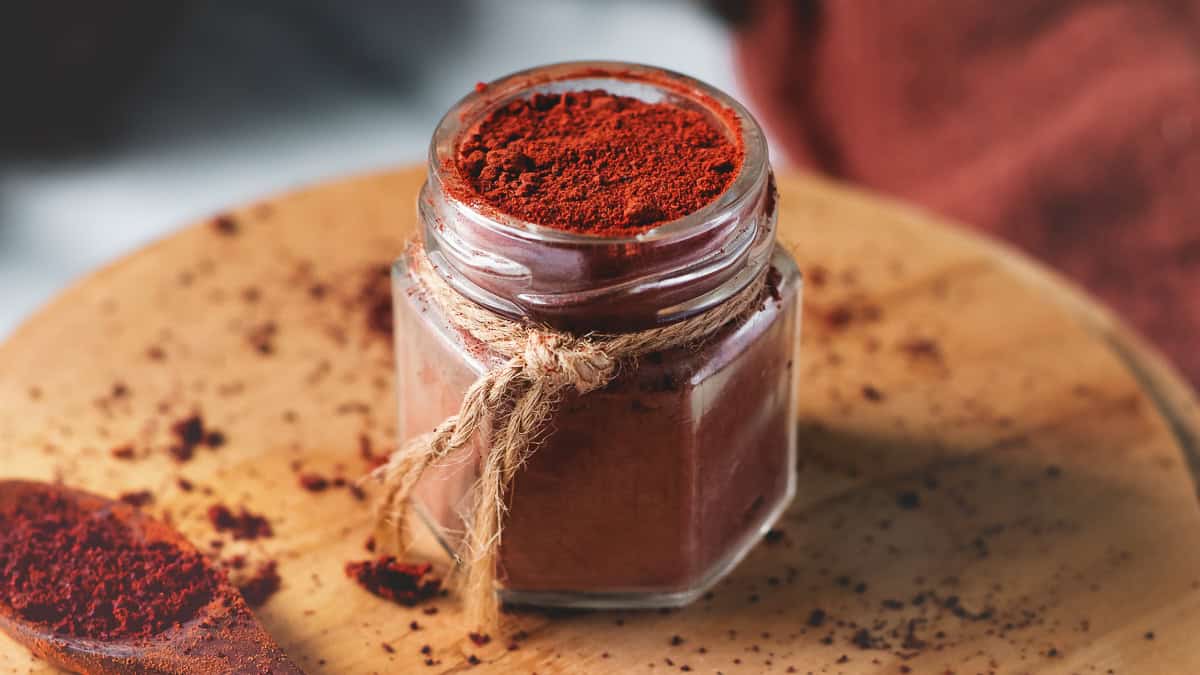
*Nutrition Disclaimer: The information provided on this site is designed for educational purposes only. You should not rely on this information as a substitute for, nor does it replace professional medical advice, diagnosis, or treatment. Please read my disclaimers page for more information.
Beetroot powder offers an earthy, sweet flavour that can elevate a variety of drinks, sweets and even savoury dishes. With its deep colour, it's also an easy way to create natural, non-toxic food colouring or pigment for DIY makeup.
On top of that, it's full of gut-loving fibre, antioxidants, vitamins and minerals, making it a simple and delicious way to add a boost of nutrients to anything from drinks and snacks to nourishing meals.
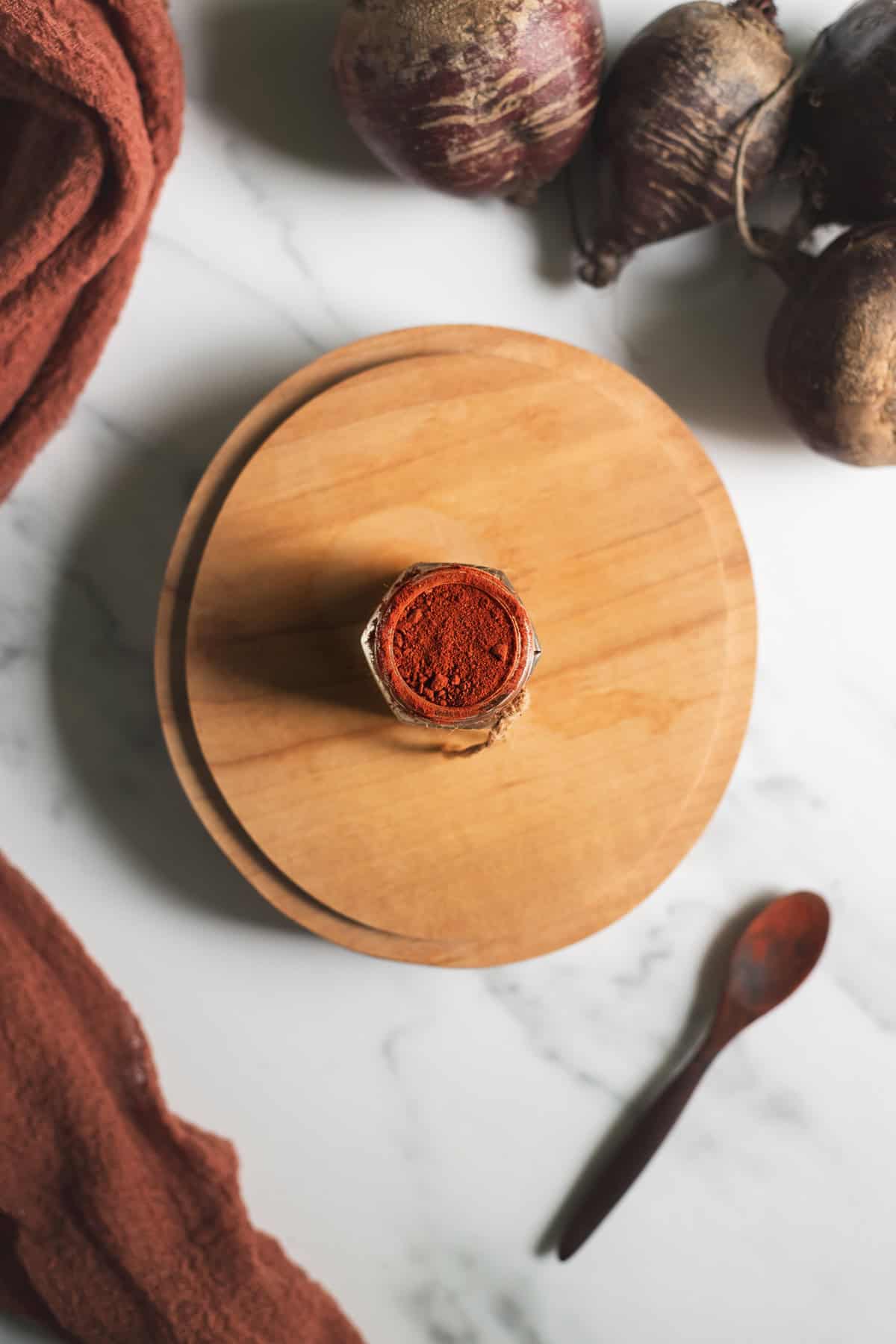
Why I Make Beetroot Powder at Home
When I first came across beetroot powder, I fell in love with the idea of easily adding a nutritious boost to smoothies, energy bites, baked goods, sauces, dips and more!
However, the sky-high price to purchase a small bag of it is less than desirable. Tempted by the allure of convenience, I opted for dreaming of the day I could afford to stock my pantry with an array of specialty superfood powders. Finally, it hit me. Making it home would likely cost a fraction of the price. So, I tested it out and never looked back.
Once I started making homemade beetroot powder, I wondered why I didn't start sooner. It's surprisingly simple. You only need one ingredient, a bit of time and a little patience. You'll also be glad to know that there's no need to invest in a dehydrator or freeze dryer to make beetroot powder at home!
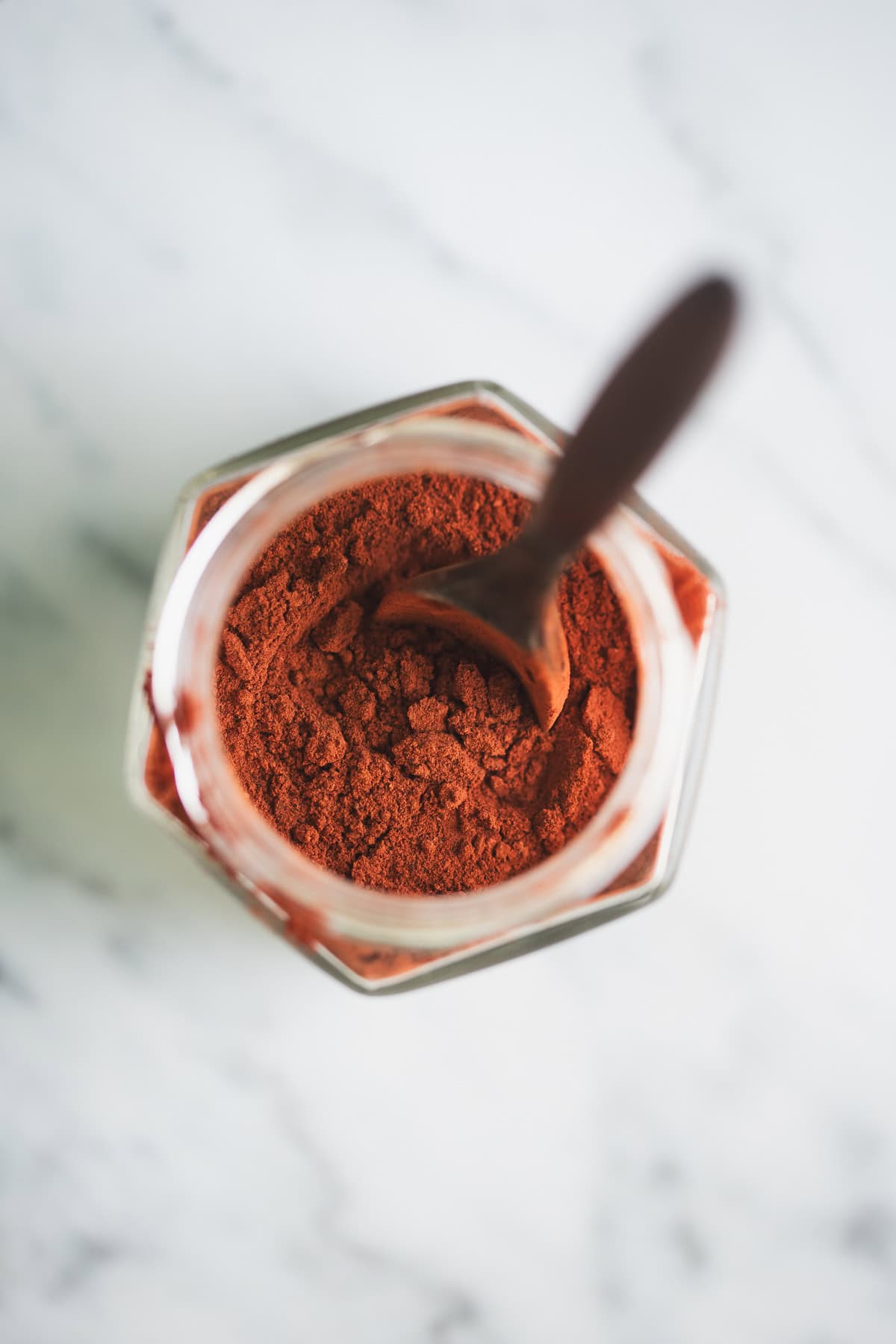
Is Beetroot Powder Healthy?
Beetroot contains many vitamins, minerals, and health-promoting plant compounds, earning the superfood label! With a long history of use in traditional healing practices, it's also considered to be a functional food.
Beetroot powder is an easy and convenient way to enjoy the benefits of beetroot. As mentioned above, it's a great way to add a nutritious boost to a variety of drinks, snacks and meals.
Health Benefits
Antioxidant-rich. Beetroot is an excellent source of antioxidants, especially betalains. These powerful compounds can help reduce inflammation, increase blood flow and contribute to heart health.
Fibre-rich. Beetroot powder is a great source of dietary and prebiotic fibre that can be beneficial to gut health.
Vitamin and mineral-rich. Beetroot powder is an excellent source of many vitamins and minerals, including potassium, calcium, magnesium, iron, Vitamin C, beta carotene and folate.
Seasonal Benefits
Spring is a great time to increase foods that support natural cleansing and detoxification. Rich in potassium and vitamin C, beetroot is a great food for supporting liver and gut health.
Summer is the perfect season to add beetroot powder to refreshing smoothies and no-bake desserts for a nourishing boost of fibre, antioxidants, vitamins and minerals.
Autumn typically yields the most abundant harvest of beetroot. This makes it a great time to preserve it while nutrients are at their peak.
Winter is a wonderful time to use beetroot powder in cozy drinks, baked treats and comforting, creamy sauces and dips. It's also a great way to add a festive touch of natural colour to holiday treats.
How to Make Beetroot Powder in the Oven
Making beetroot powder by oven-drying it is not as difficult as it may seem. It only requires one ingredient and a bit of patience. However, there are a few key tricks I have found to be helpful in yielding the best results. You can find them in the instructions below.

What You Will Need
Equipment
- Oven to dehydrate the beets.
- Baking sheet(s) to evenly space the shredded beetroot. I like dividing the beeroot on two 10x15 baking sheets.
- Unbleached parchment paper (optional) can help prevent sticking. However, I find stirring the beetroot every 30 minutes or so also can prevent sticking.
- Cheese grater to shred the beets.
- Blender to grind the dehydrated beets into a powder. You can also use a food processor or even a mortar and pestle.
Ingredients
- Beetroot is the only ingredient required. The fresher and firmer the beets are, the easier it is to grate them into even shreds.
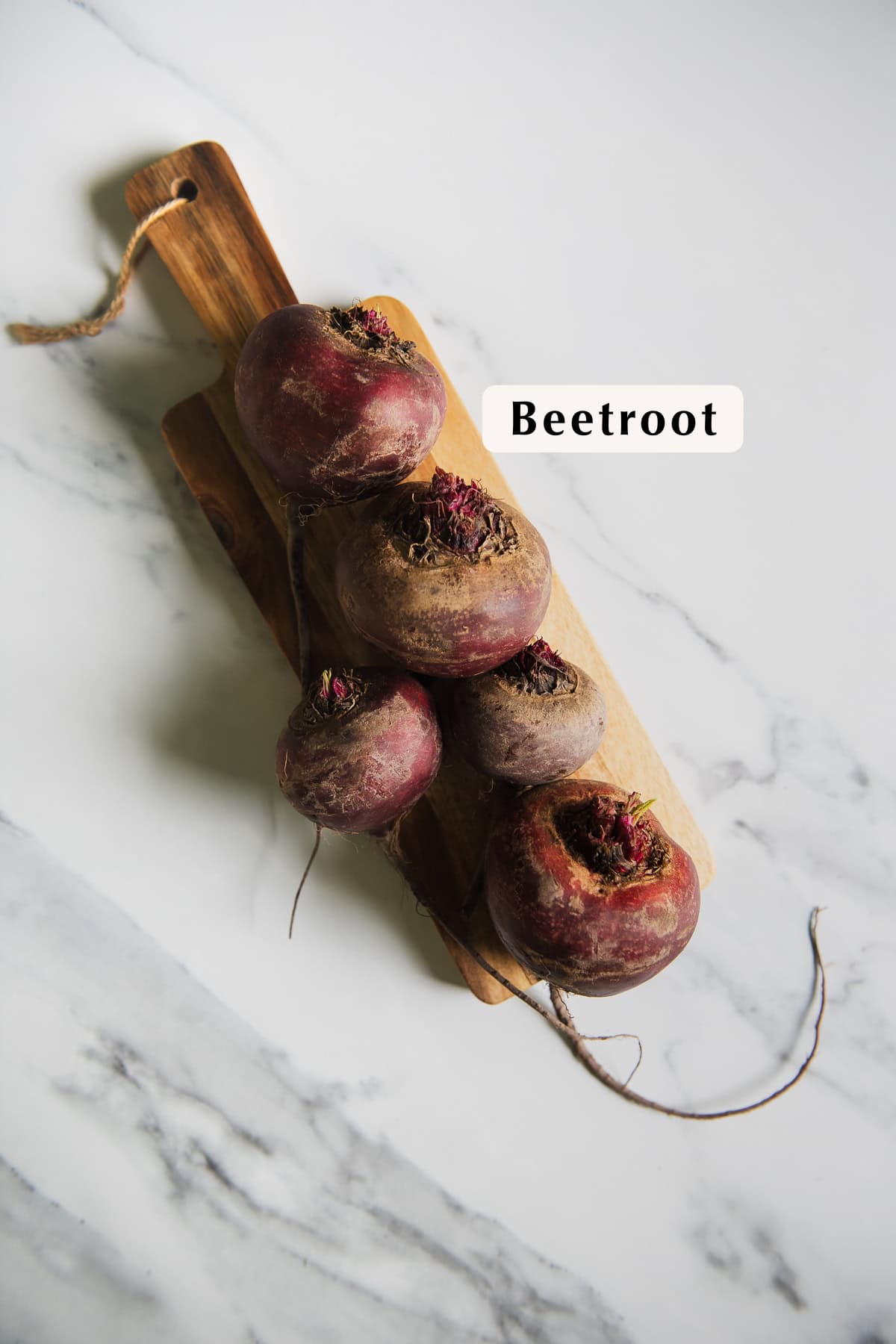
Step 1: Grate / Shred
First, preheat your oven to the lowest temperature (150 - 200°F). I Find That drying the beets at 150 - 180°F yields the brightest colour.
Next, peel the beets and shred them with a cheese grater. You can also use a mandolin to cut them into thin slices, or an electric chopper or food processor to blend them down into small pieces. The more even the shreds or slices are, the better.
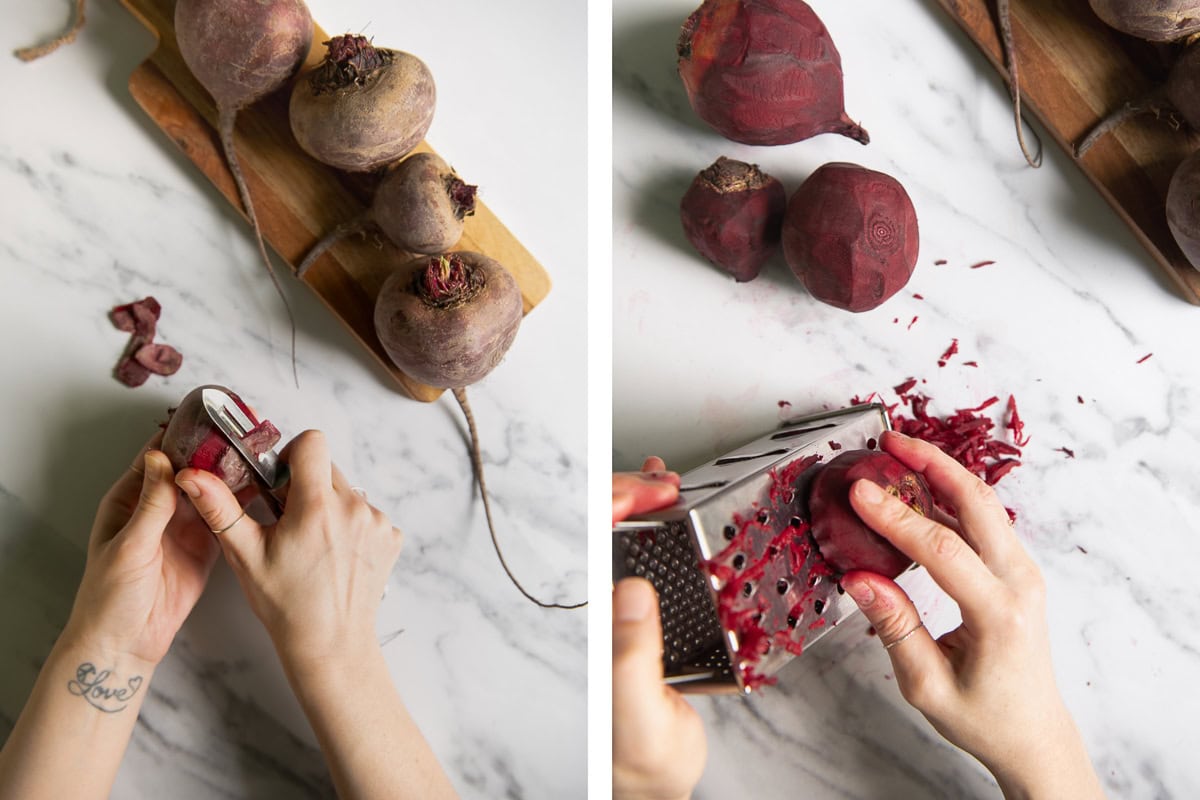
Step 2: Oven-Dry
Spread the shredded beetroot evenly on a baking sheet, making sure it is not overcrowded. Leaving plenty of space is key, as overcrowding can result in longer drying times. This can also cause the beetroot to dry unevenly, which can turn the powder brown or burnt orange.
To ensure there is enough space, I typically divide the shredded beetroot between two 10x15 baking sheets. I prefer this size since they easily fit on the same oven rack, eliminating the need to dry them separately.
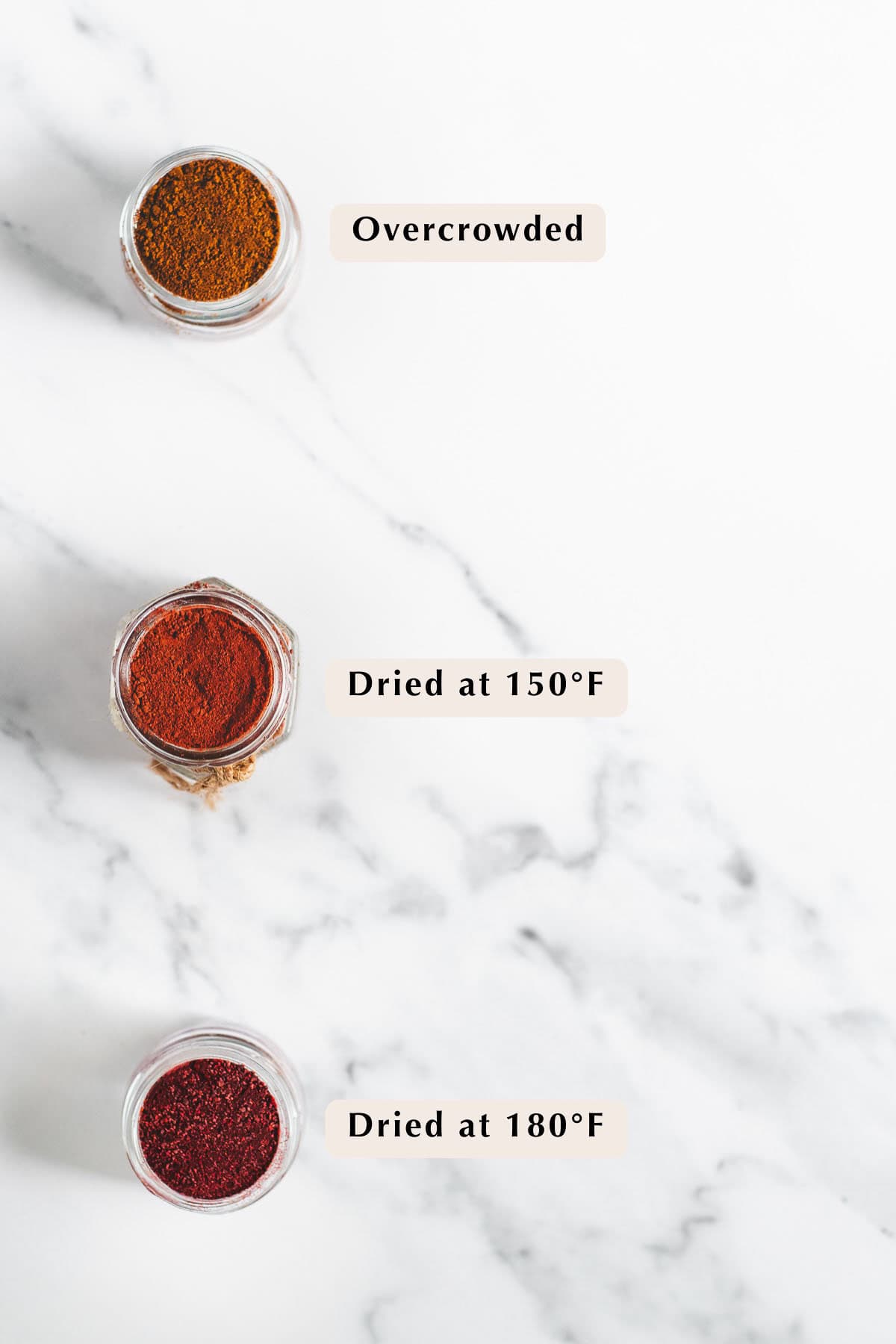
Once evenly spaced, place the beetroot in the oven, stirring every 30 minutes until it is crisp to the touch. The time can vary depending on the temperature and spacing. A well-spaced batch can take as little as 1 hour and 30 minutes. However, I typically find it takes 1 hour and 45 minutes to 2 hours.
That being said, I have overloaded my pan a time or two, and it took nearly 4 hours to fully dry. On top of that, it resulted in a burnt orange colour instead of the usual red (as pictured above).
When the beetroot is dry, it should be crisp to the touch with a deep red hue. It's important to keep a close eye to avoid burning, which will result in a brown powder. That's why I like to give it a quick stir every 30 minutes or so.
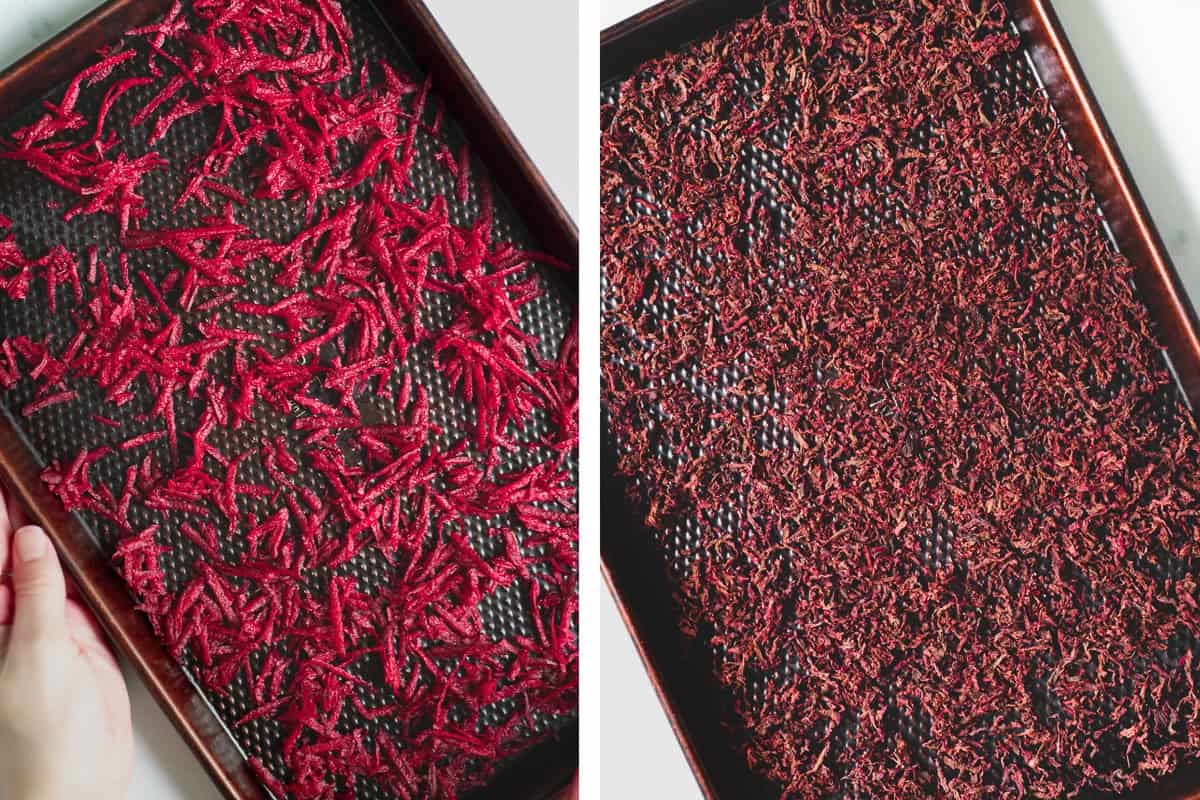
Step 3: Blend
Remove the beetroot from the oven once it is fully dehydrated and place it away from the heat to let it cool completely.
Once fully cooled, place it in a blender and blend until it becomes a fine powder. For smaller quantities, a smaller blender such as a single-serve smoothie blender or even a coffee grinder can yield a smoother powder.
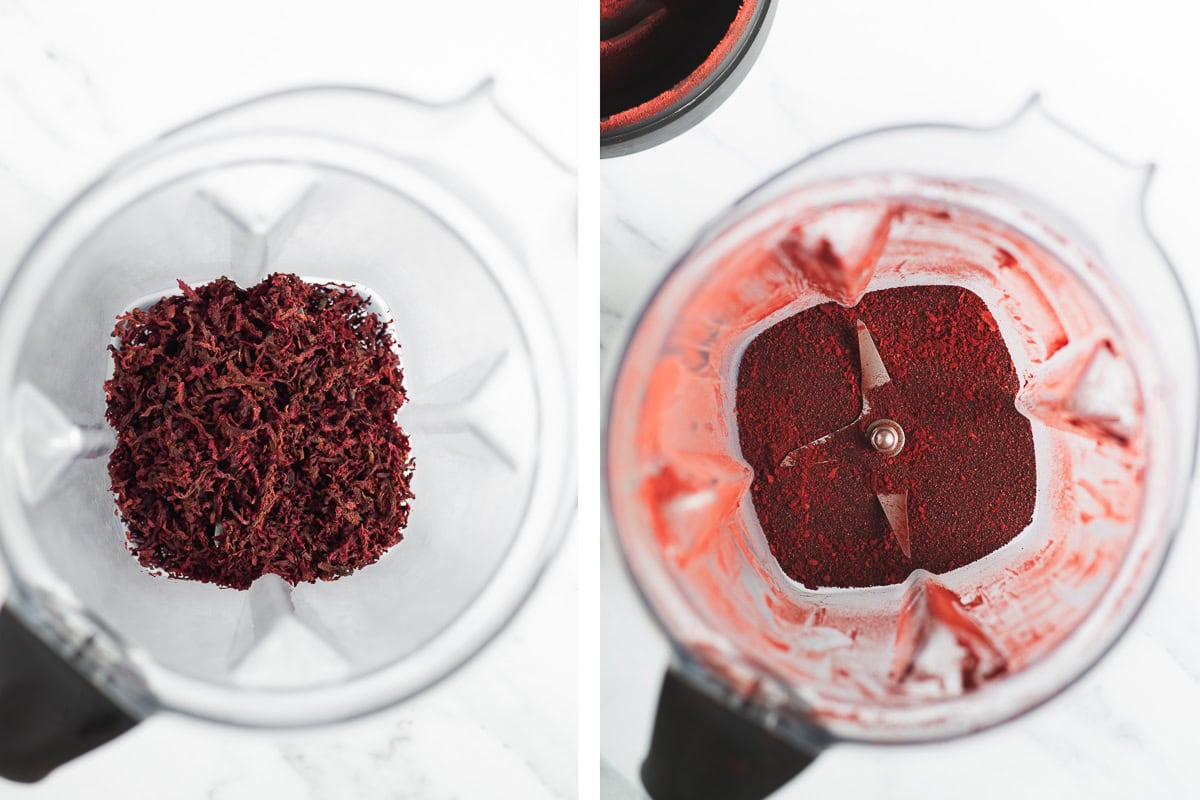
However, if you only have a full-sized blender and it has left your beetroot coarsely ground, you can use a mortar and pestle to further crush it down.
Alternatively, a mortar and pestle can be used even without a blender or coffee grinder. It won't produce the finest powder, but it does the trick in a pinch!
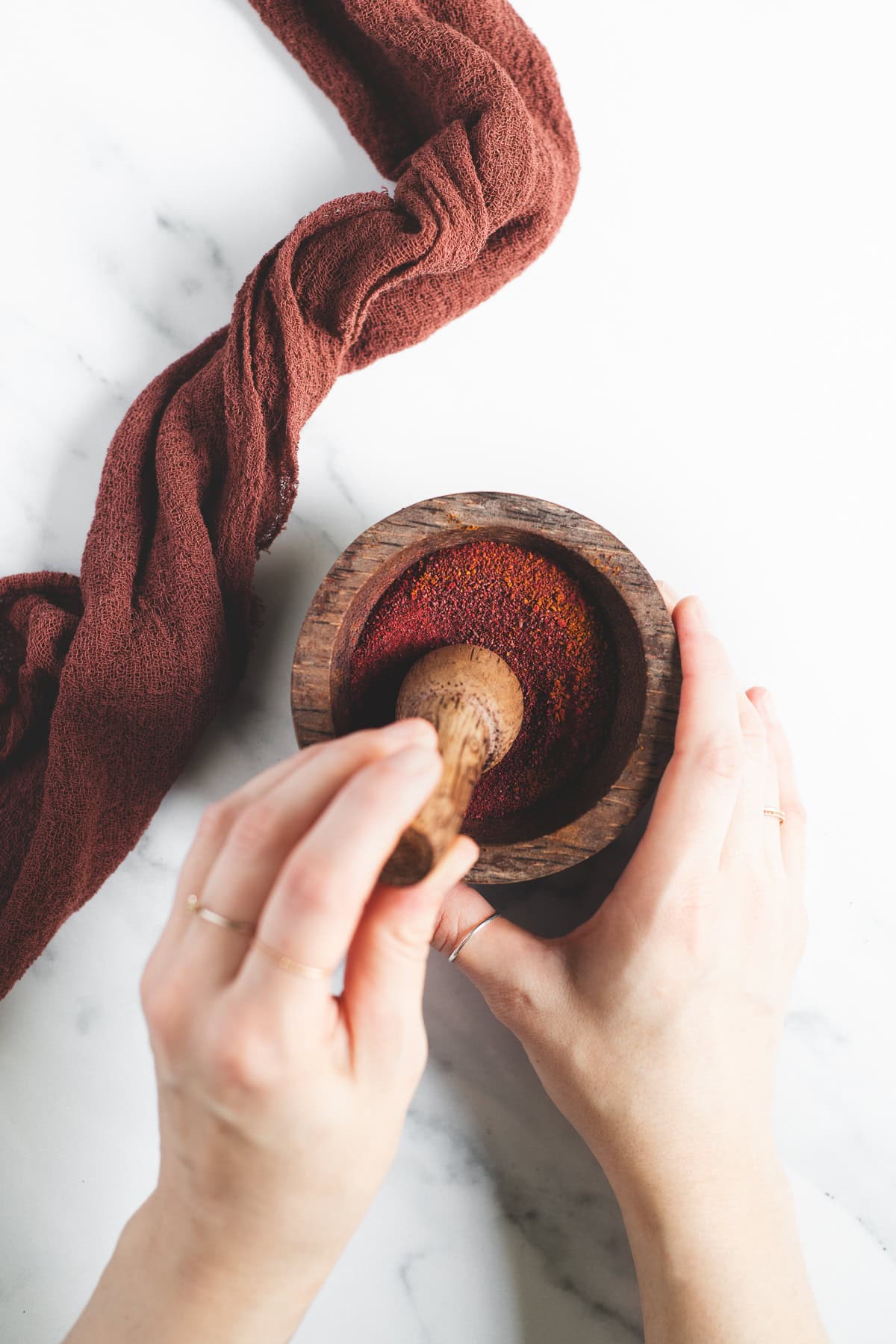
How to Store Beetroot Powder
As mentioned above, it's important to allow the dehydrated beetroot to fully cool before blending and sealing. Trapped moisture can cause clumping and a shortened shelf life.
Once you've blended the dried and cooled beetroot shreds, seal the powder in an airtight container. I like using glass jars to preserve the freshest flavour and avoid toxins that can leach from plastic.
If properly sealed, beetroot powder can last up to 6 months at room temperature and up to a year in the fridge.
My Top Tips
- Evenly shred for best results. This helps to prevent smaller bits and ends from burning and larger pieces from remaining moist.
- Don't overcrowd to ensure the beetroot is evenly dehydrated and to avoid extra-long drying times.
- Set your oven to the lowest temperature to prevent burning and nutrient loss. It can be tempting to speed up the process by turning up the heat. However, this can result in cooking or burning the beetroot rather than dehydrating it. Higher temperatures may also produce a darker, less vibrant colour.
- Use organic or homegrown beetroot to reduce exposure to toxins found in pesticides and herbicides.
Ways to Use Beetroot Powder
Nutrient-Booster. As mentioned, beetroot makes an excellent nutrient-booster. It's an easy and delicious way to give smoothies, snacks and sauces a nourishing boost of fibre, antioxidants, vitamins and minerals.
Natural food colouring. The same compounds that make beetroot rich in health-promoting antioxidants are the same that give it its deep and vibrant pigments. This makes beetroot powder a clean, healthy way to make an all-natural pink or red food colouring. It can be used to make homemade icing or festive breakfasts and baked goods.
Natural sweetener. Beetroot powder has a mildly sweet flavour that can be used to add natural sweetness to desserts, drinks, sauces and more!
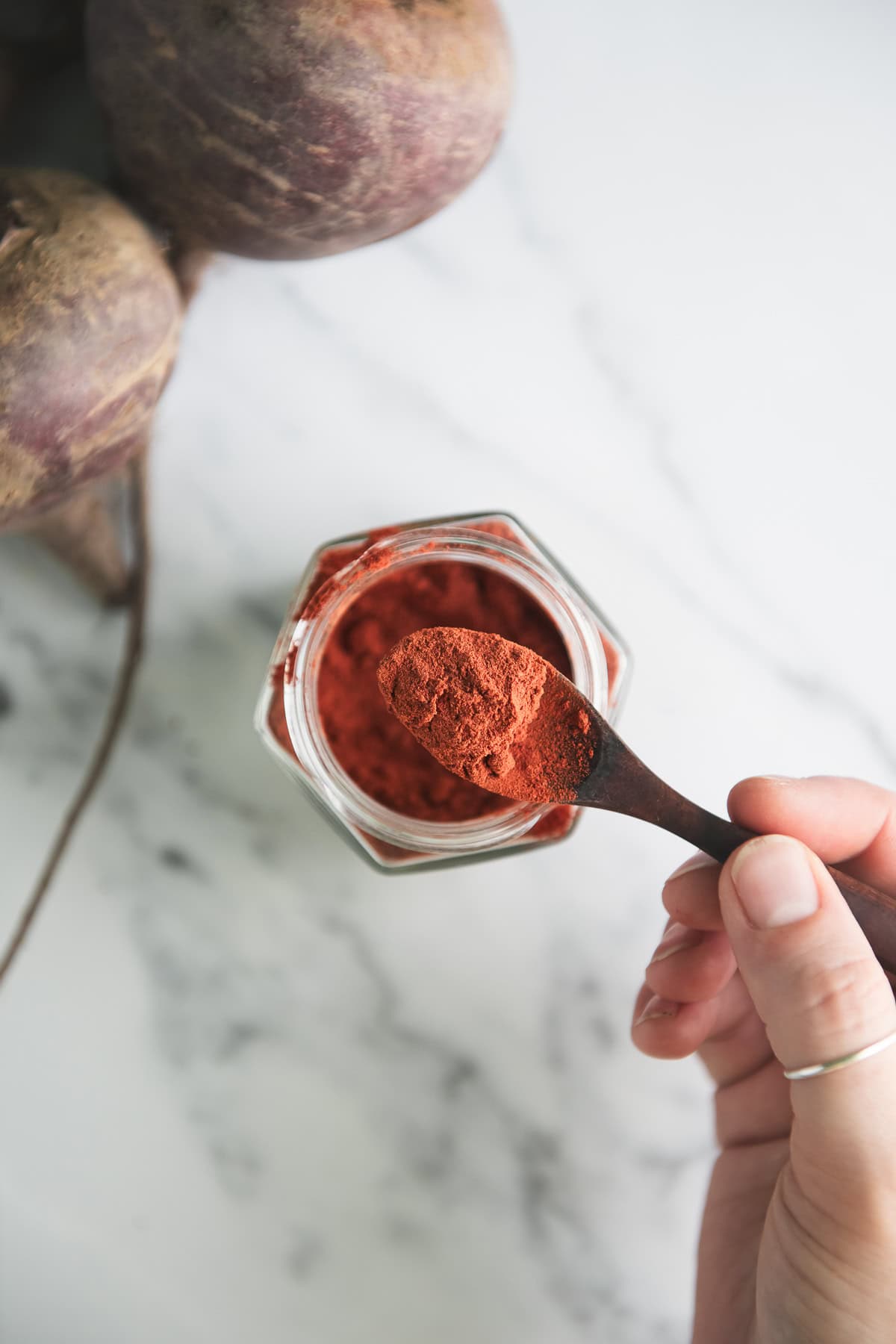
FAQs
Your beetroot powder might come out brown if it was overcrowded, overcooked or if there were uneven pieces that got burnt. Baking it at too high a temperature may also alter the colour.
If stored properly in a dry, airtight container, homemade beetroot powder can last up to 6 months at room temperature and up to 1 year in the fridge.
It is typical and natural for some clumping to occur, especially if it has been stored in the fridge or has been exposed to humidity. If clumping occurs, I find it easiest to throw it in the blender for a few seconds or use a mortar and pestle to break up any small clumps.
If it is due to humidity or moisture in the jar, be sure to check it thoroughly for any mould growth and discard if it looks or smells off.
Recipe Highlights
Money-saving. Making beetroot powder at home is a cost-effective way to enjoy the nutritional benefits and convenience of beetroot powder.
Versatile. Beetroot powder can act as a natural food colouring, a mild sweetener and a nutrient booster. It can be added to a variety of drinks and dishes, both sweet and savoury.
Suitable for many diets. Beetroot powder is naturally gluten-free, dairy-free, and suitable for vegan, paleo and Whole30 diets.
Superfood. Full of many nutrients, including fibre, antioxidants, vitamins and minerals, beetroot powder has earned the superfood label.
More Beetroot Recipes
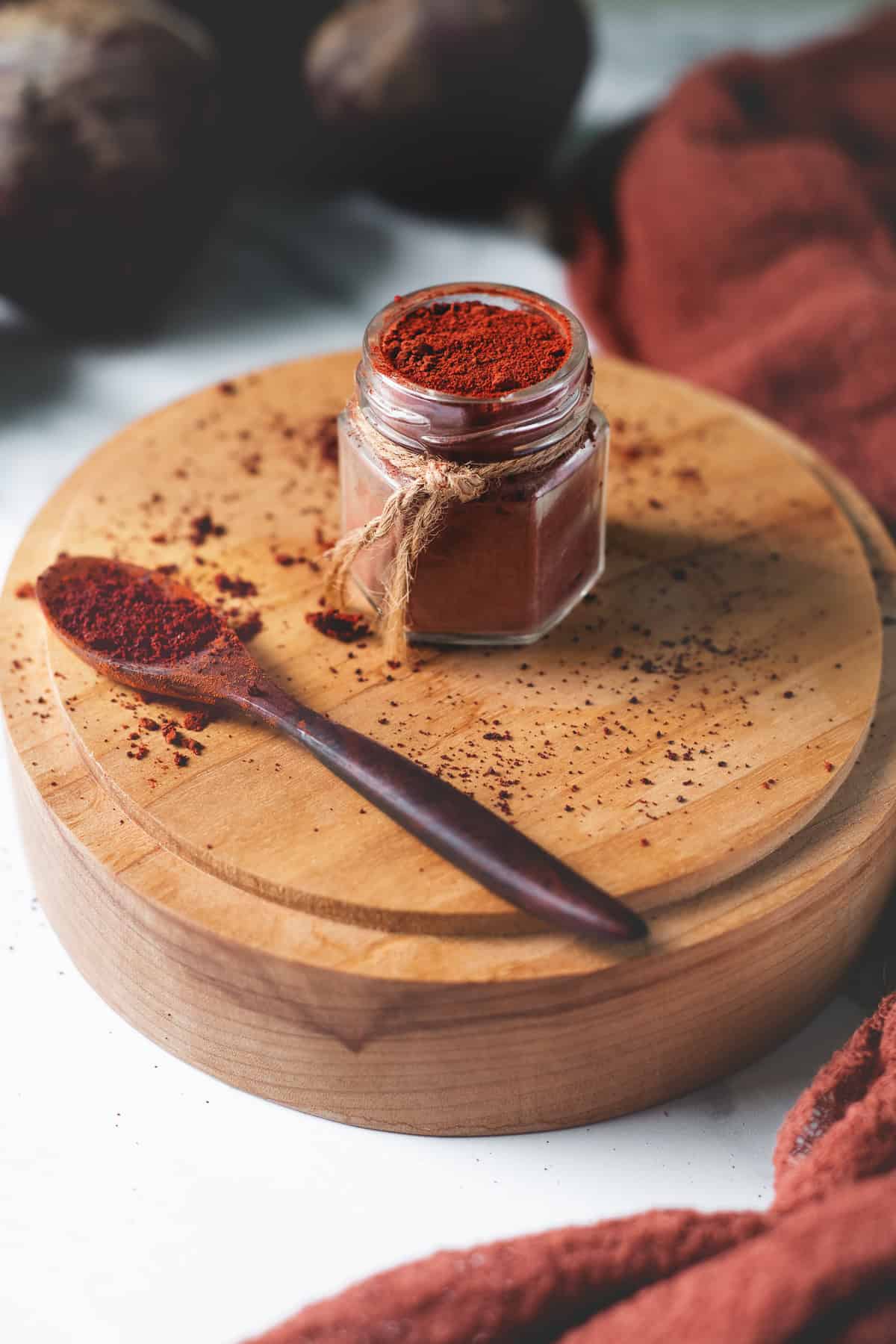
If you make this Homemade Beetroot Powder, let me know how it turns out by leaving a comment and rating below. Also, be sure to follow me on Pinterest, Instagram, Facebook and Flipboard for more wildly nutritious recipes!
How to Make Homemade Beetroot Powder (In Oven)
Print RecipeEquipment
- Oven
- Baking Sheet
- Cheese Grater
- Blender
- Unbleached Parchment Paper (Optional)
Ingredients
- 2 lbs Beetroot (about 4 -5 Medium Beets)
Instructions
- First, preheat your oven to the lowest temperature (150 - 200°F). I Find That drying the beets at 150 - 180°F yields the brightest colour. Next, peel the beets and shred them with a cheese grater. You can also use a mandolin to cut them into thin slices, or an electric chopper or food processor to blend them down into small pieces. The more even the shreds or slices are, the better.
- Spread the shredded beetroot evenly on a baking sheet, making sure it is not overcrowded. Leaving plenty of space is key, as overcrowding can result in longer drying times. This can also cause the beetroot to dry unevenly, which can turn the powder brown or burnt orange.To ensure there is enough space, I typically divide the shredded beetroot between two 10x15 baking sheets. I prefer this size since they easily fit on the same oven rack, eliminating the need to dry them separately.Once evenly spaced, place the beetroot in the oven, stirring every 30 minutes until it is crisp to the touch. The time can vary depending on the temperature and spacing. A well-spaced batch can take as little as 1 hour and 30 minutes. However, I typically find it takes 1 hour and 45 minutes to 2 hours.When the beetroot is dry, it should be crisp to the touch with a deep red hue. It's important to keep a close eye to avoid burning, which will result in a brown powder. That's why I like to give it a quick stir every 30 minutes or so.
- Remove the beetroot from the oven once it is fully dehydrated and place it away from the heat to let it cool completely. Once fully cooled, place it in a blender and blend until it becomes a fine powder. For smaller quantities, a smaller blender such as a single-serve smoothie blender or even a coffee grinder can yield a smoother powder.However, if you only have a full-sized blender and it has left your beetroot coarsely ground, you can use a mortar and pestle to further crush it down.Alternatively, a mortar and pestle can be used even without a blender or coffee grinder. It won't produce the finest powder, but it does the trick in a pinch!
- It's important to allow the dehydrated beetroot to fully cool before blending and storing. Trapped moisture can cause clumping and a shortened shelf life.Once you've blended the dried and cooled beetroot shreds, seal the powder in an airtight container. I like using glass jars to preserve the freshest flavour and avoid toxins that can leach from plastic.If properly sealed, beetroot powder can last up to 6 months at room temperature and up to a year in the fridge.

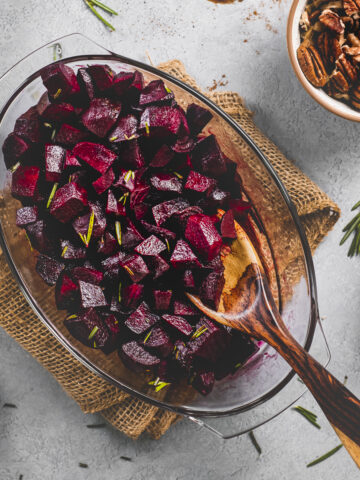
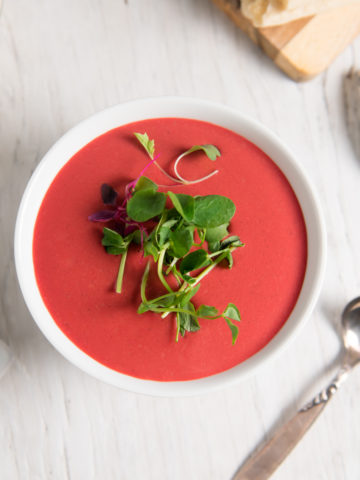
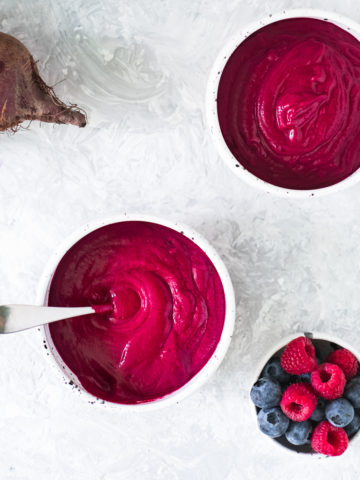
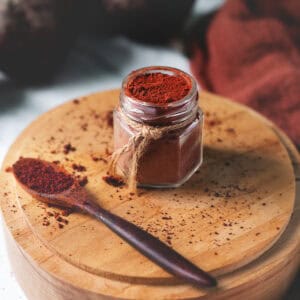
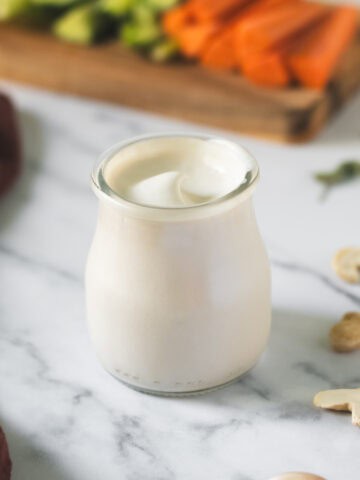
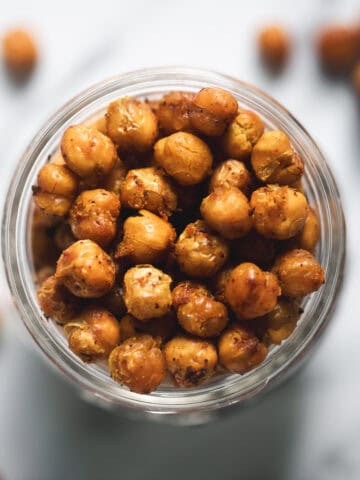
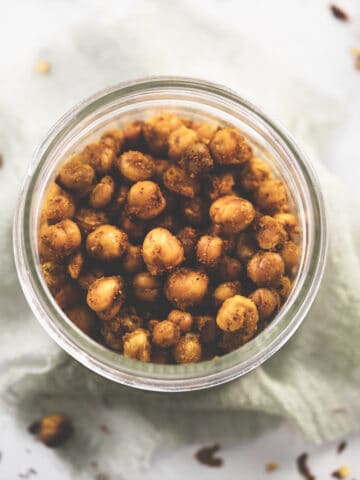
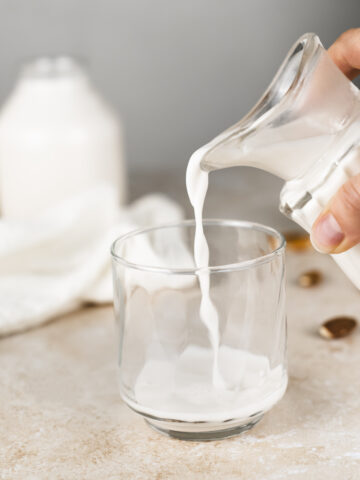
Rate this Recipe & Share How it Turned Out!